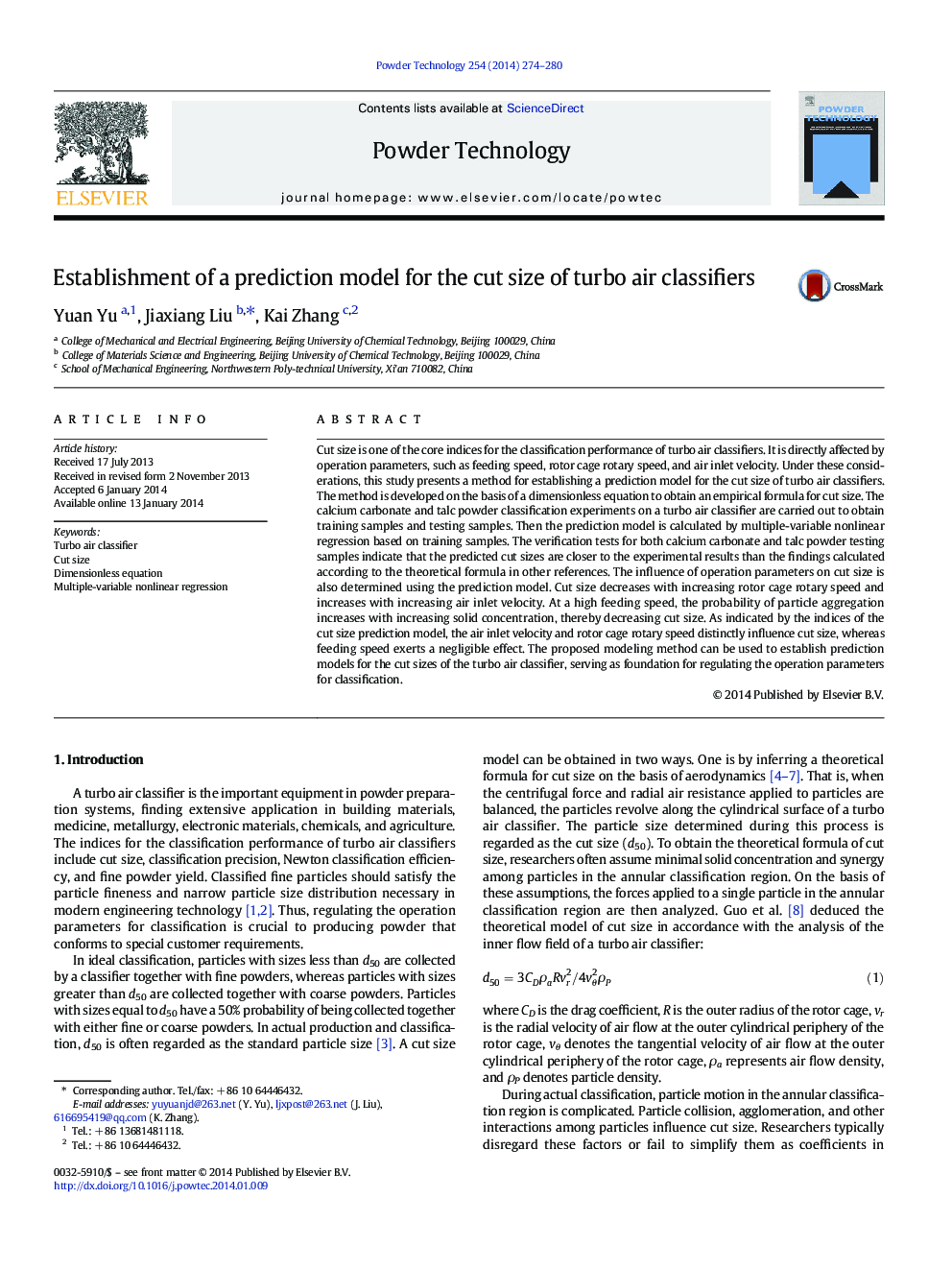| Article ID | Journal | Published Year | Pages | File Type |
|---|---|---|---|---|
| 236253 | Powder Technology | 2014 | 7 Pages |
•A prediction model for the cut size of a turbo air classifier is introduced.•It can be applied to different materials.•The predicted values are closer to the experimental ones than the theoretical ones.
Cut size is one of the core indices for the classification performance of turbo air classifiers. It is directly affected by operation parameters, such as feeding speed, rotor cage rotary speed, and air inlet velocity. Under these considerations, this study presents a method for establishing a prediction model for the cut size of turbo air classifiers. The method is developed on the basis of a dimensionless equation to obtain an empirical formula for cut size. The calcium carbonate and talc powder classification experiments on a turbo air classifier are carried out to obtain training samples and testing samples. Then the prediction model is calculated by multiple-variable nonlinear regression based on training samples. The verification tests for both calcium carbonate and talc powder testing samples indicate that the predicted cut sizes are closer to the experimental results than the findings calculated according to the theoretical formula in other references. The influence of operation parameters on cut size is also determined using the prediction model. Cut size decreases with increasing rotor cage rotary speed and increases with increasing air inlet velocity. At a high feeding speed, the probability of particle aggregation increases with increasing solid concentration, thereby decreasing cut size. As indicated by the indices of the cut size prediction model, the air inlet velocity and rotor cage rotary speed distinctly influence cut size, whereas feeding speed exerts a negligible effect. The proposed modeling method can be used to establish prediction models for the cut sizes of the turbo air classifier, serving as foundation for regulating the operation parameters for classification.
Graphical abstractFigure optionsDownload full-size imageDownload as PowerPoint slide
